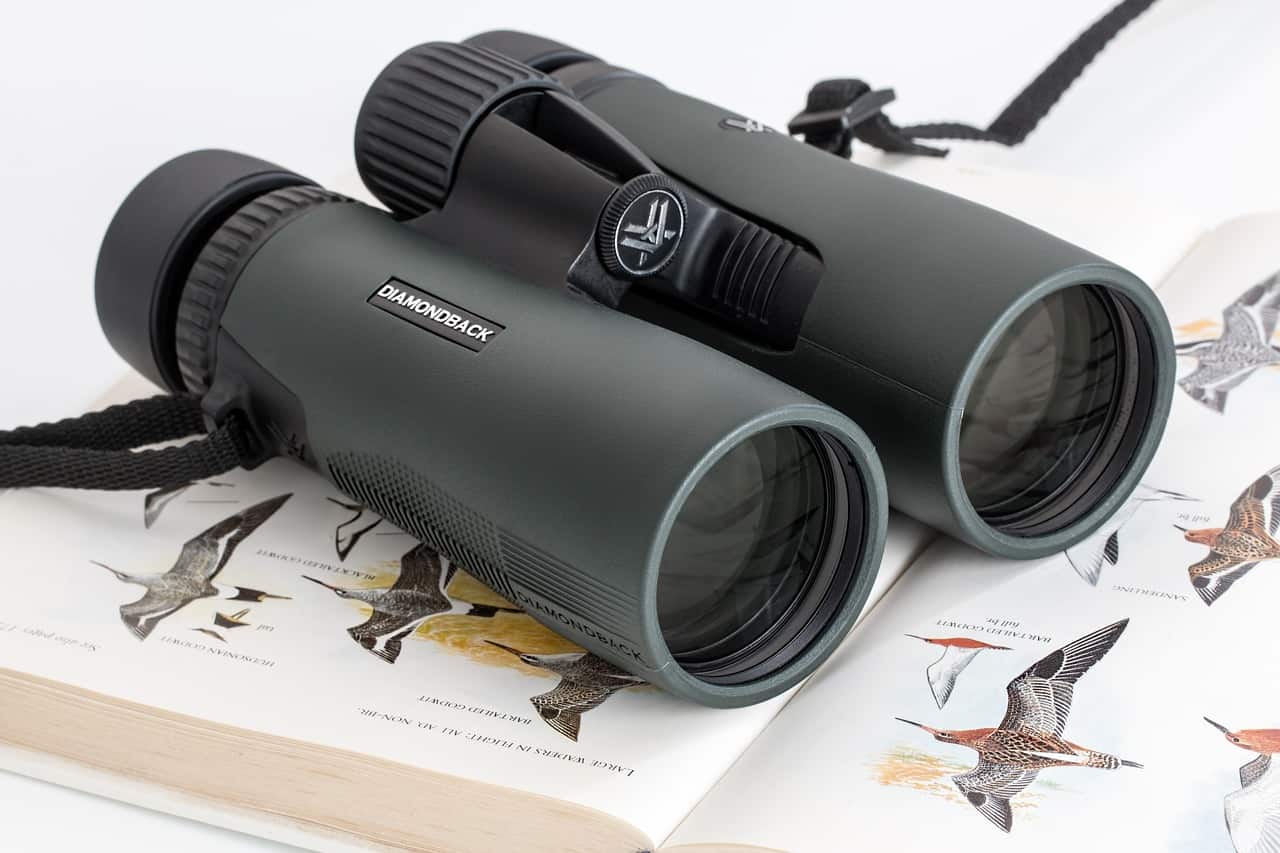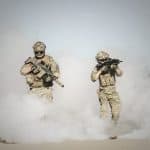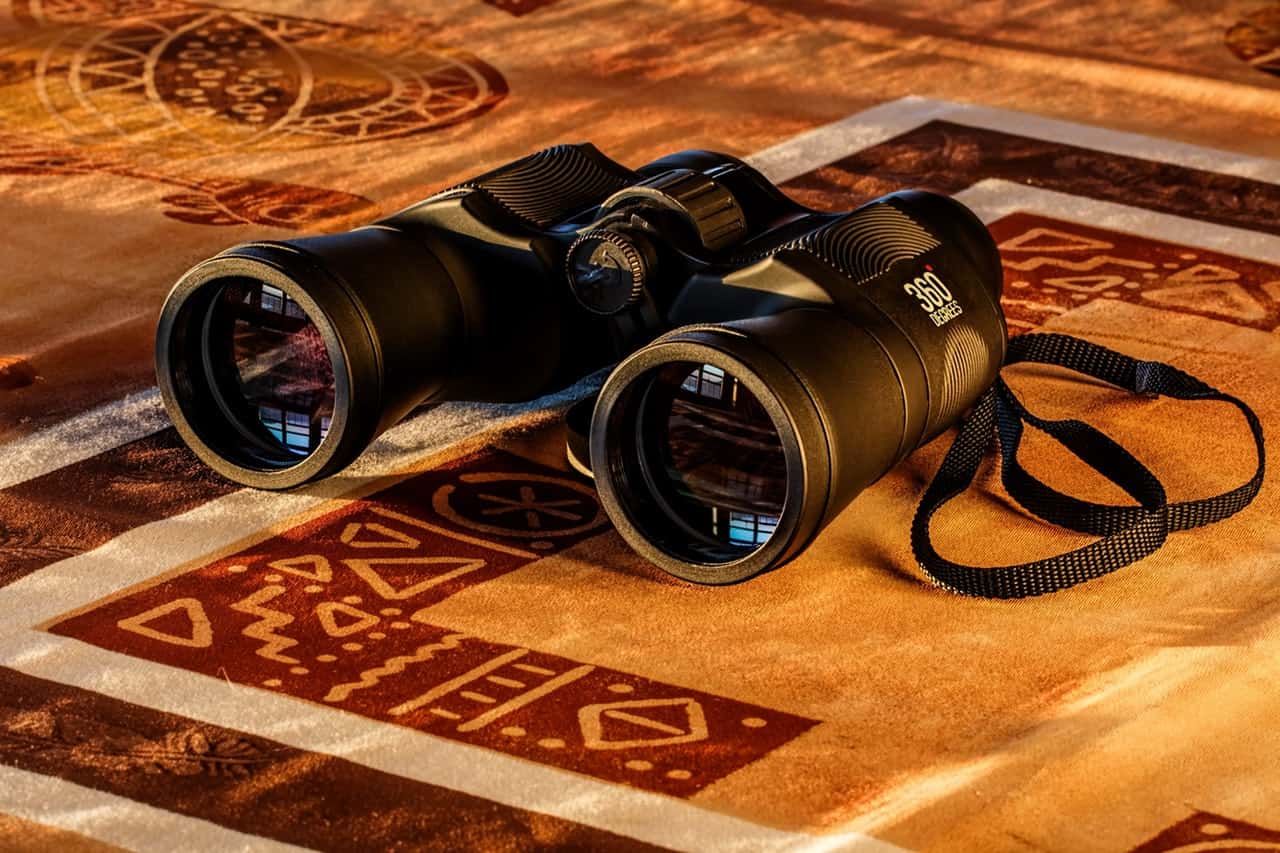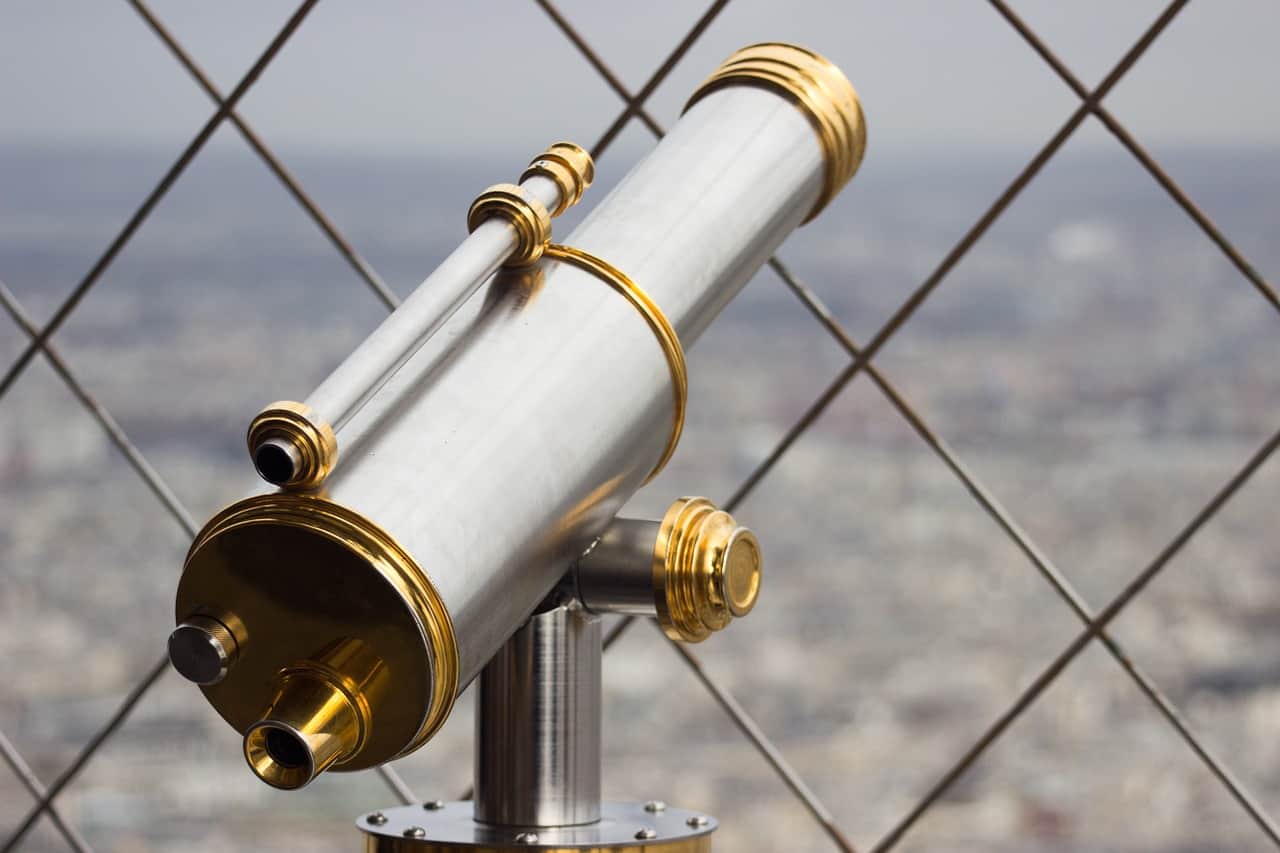You don’t realize how important a binocular can be until you have one. The whole world becomes so vivid and clear through the lens of a binocular and you realize what exactly you were missing out on.
Bird watchers, hunters or even sports and nature lover take their binoculars very seriously. A common man will most probably feel the need for binoculars when on vacations while enjoying the beautiful scenery.
Whatever is your requirement, making a decision about buying a binocular can indeed turn into a confusing task especially if you are a novice in the field of optics. Different types of binoculars are meant for diverse purposes so you should have maximum knowledge about what to look for when buying binoculars and how to choose the right binocular.
Binoculars 101: How to Choose Binoculars

Share this Image On Your Site
Let’s start this binocular buying guide by understanding some basic and important specifications.
#1 Magnification Aspect
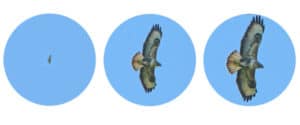
One of the most important jobs of a binocular is to magnify the distant or hard to see objects or views that you need to see. So it is understandable to get some perception about how magnification works.
Every Binocular mention magnification numbers in their names. The number that comes before x means that the image is magnified by those numbers.
For example: what does a 10×42 binocular mean? In 10×42 binocular, the image appears 10 times more enhanced the actual naked eye image. 10×50 binocular mean the same, that the image is magnified 10 times.
Depending on your need and many other factors, choosing the best binocular for the money with the right magnification is critical. Mostly, binoculars with 8 or 10 magnification work fairly well for multiple occasions.
However, remember one critical point about magnification, if magnification goes high the image brightness and visibility plus scope of view drops considerably. Moreover, a slight shake of the hand or bump also gets amplified. A high magnified binocular doesn’t always guarantee a high resolution or brightened image.
#2 Lens Diameter
Lens diameter or size is mentioned in the name of binocular right after magnifications. That means that the second number that comes after x is the diameter size of your lens.
The outer lens or objective lens is placed at the end of an optic. In 10×42 binocular, 42 is the diameter of the lens described in mm. The heavier the lens size, the bulkier a binocular.
The heavier lens also has some advantages, like a bigger lens will allow more light to enter ensuring a better and brighter picture even in low light situations. That means a bigger lens optic will work efficiently at night or in foggy or blurry conditions too.
There is no doubt that heavier binoculars that are equipped with big lenses do provide better image quality. But at the same time, they get heavier to hold, so you require a tripod or stand to use them steadily.
#3 Lens Coating and Lens Quality
Every binocular lens has some degree of chemical coating on them. Lens coating is of sublime importance for the reason that they allow maximum light to pass through lenses. Thus allowing the picture to get much clearer.
Just think about it this way, a mirror does not absorb all the light that it receives rather it reflects back most of the light. Similarly, the lens doesn’t absorb all the light it gets without coating. Without coating or with fewer coatings, most of the light will disappear so the image provided will be of low quality.
Often times, one can get pretty confused while looking at lens coating specifications. Because there are 4 types of lens coating used by any manufacturer.
- Coated/single coating: a single layer of coating is applied on at least one lens.
- Fully-coated: single-layer coating is applied to all air-to-glass lenses.
- Multi-coated: multiple layers of chemical coating is applied on at least one lens.
- Fully multi-coated: multiple layers of coating is applied to all air-to-glass lenses.
Lens coating greatly depends on the price tag because multiple coating will provide a high-quality image compared to the single coating. Similarly, a fully multicoated lens will provide further greater quality pictures compared to a multi-coated one.
#4 Porro Prism and Roof Prism
When an image is received by an objective lens, it is downside up. A prism is a transparent optical entity used inside the binoculars to flip the image right side up. The difference in binoculars also depends on particular prisms used in manufacturing. Two types of prisms are used depending on binocular designs.
Quite often, the traditional close-eyed binoculars use Porro prisms. Porro prism is cheap and less complex to make, providing a good quality image that’s why most binoculars with cheap price tag prefer them.
The introduction of roof prism took binocular manufacturing to another level, allowing it to become more compact and portable. Most modern binoculars are wide-shaped and dense because they use roof-prism. Their straight through body shape technology is ideal for detailed viewing and better mechanical endurance.
Rapid progress in technology has considerably decreased the price gap between the two types. However, it all depends on what you prefer in terms of design and outlook. Porro prisms are more compact these days compared to roof prisms especially when the size goes up to 40mm.
#5 Weight
Binoculars with larger lenses and higher magnification are heavier than standard binoculars. Decide beforehand how you are going to use your binoculars. If you are a frequent traveller or hiker, then carrying around a heavy set of optics can get really tiresome. Most modern binoculars are more solid and portable thus making them easier to carry around.
For long-range viewings like bird watching, hunting or military purposes, you need a binocular with large lenses. Heavier binoculars can be fixed on to a tripod or even strapped around your neck, to make them more steady and comfortable to carry around.
#6 Field of View
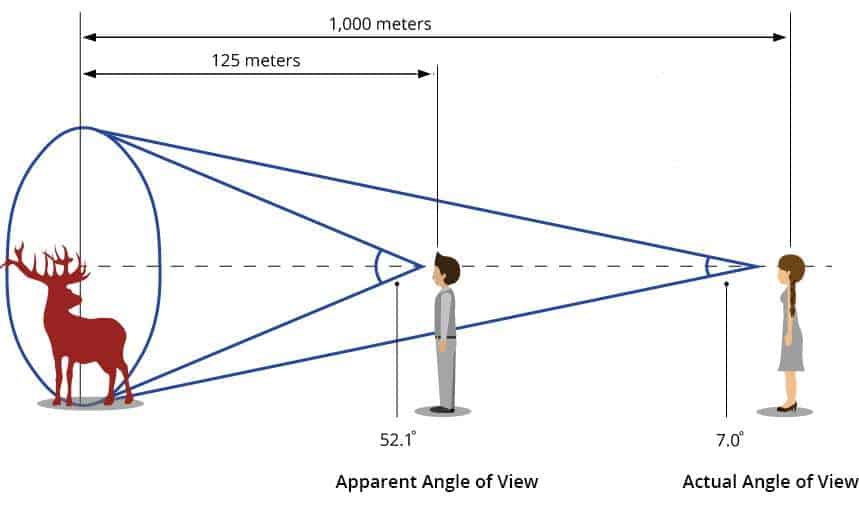
Field of view or FOV means the area that can be seen through the lenses. There are two aspects to the field of view, angular and linear field of view. Both fields of views describe the width of FOV covered by binoculars, although they describe it in different numbers.
The angular view is mentioned in degrees while linear FOV is described in feet. To convert an angular field of view into linear, just multiply the angular field by 52.5, so if the angular field of an optic is 6° then the linear field at 1000 yard will be 315 and vice versa.
Field of view and magnification are greatly co-related. They directly depend on each other so in order to buy the best binoculars you need to understand how these two are dependent on one another.
The higher the magnification of a binocular, the narrower the field of view. That means binocular with higher magnification comes with a smaller field of view. Now the question arises: how to choose binoculars with a suitable field of view? It depends on the activities for which you are planning to use your binoculars.
The larger field of view is ideal for activities that involve rapid movement because then you can focus on the moving object more closely. A wide field of view is ideal for bird watching because you are looking at distant objects over a long field, so having a wide view is preferred in such cases.
#7 Waterproof
Having a waterproof gadget is always favourable. So it is completely understandable that the best binoculars are essentially waterproof because they are outdoor gadgets and also prone to water splashing or rain etc.
Waterproof binocular will also be weather resistant and dust efficient which is going to increase the longevity of the gadget as well as make it easier to clean.
Typically, O-ring barriers are used to make sure there is water and air barriers between lenses, which also helps to get rid of dust particles and other residuals that can gather around the lens with the passage of time thus destroying the view.
There can be some confusion between the term “water-resistant”, “weather-protected” and “waterproof”. You need to understand that there is indeed a difference between these terms and they are not the same as is the common misconception.
A binocular that is water-resistant or weather protected is not necessarily fully waterproof which means that it cannot be used under deep water or even in heavy rain. However, you can use them in shallow waters or in the drizzle.
#8 Exit Pupil
When you see through binoculars, the amount of light that appears in the form of a circle is called the exit pupil.
Hold the lens toward the light, the right circle that appears in the centre of the eyepiece is the exit pupil. It determines how efficiently a binocular can perform under low light conditions.
The size of the objective lens divided by magnification will provide you with the size of the exit pupil. So for 10×42, the exit pupil is going to be of size 4.2mm.
The human eye dilates from 5 to 9 mm at night time or in poor viewing conditions. You should consider buying a binocular that has a similar size exit pupil (5 to 9mm) for a brighter and enhanced image during night time viewing.
#9 Eye Relief
The distance between your eye and the eyepiece of binocular is called eye relief and is measured in millimetres. The eye should be placed here for the comfortable full field of view.
Placing eye at the right position is very important because if your eye is too close or too far from the eyepiece it can disturb the quality of your field of view.
An ideal eye relief should be between 10mm to 15mm which also makes it comfortable for the people who use eyeglasses.
Eye strain is another factor to consider while looking for the best binoculars to buy. Some good and high-quality binoculars hardly cause any eye fatigue even when used for a long time period. Always prefer buying a binocular that doesn’t strain your eyes because you don’t want to suffer from a headache.
#10 Diopter Adjustment
A focusing wheel on the binocular is placed right at the centre of the binocular and is used to focus on an object that you want to view. When you rotate the wheel it adjusts both barrels simultaneously.
A diopter works differently than a focusing wheel, a diopter ring is usually located on right or left eyepiece. It is shaped like an adjustable ring which is used to set focus on one barrel independently and compensate for the difference of vision between the right and left eye. Two types of diopter adjustments are used on binoculars:
Standard adjustment: it is the most usual type of adjustment that is used on the majority of binoculars with a reasonable price tag.
Lockable diopter: it is often said that you get what you pay for. Lockable diopters are used in high-quality optics. An advantage of lockable adjustment is that your diopter settings are locked in place and cannot be changed accidentally.
Understanding binocular specifications that I have explained above in detail will massively help you even if you are a beginner. So now that you know what to look for when buying binoculars let’s move on to another important factor, the pricing.
Pricing of Binoculars
The difference in binoculars is inevitably based on the difference in price tags.
Most cheap binoculars use inexpensive materials so the image quality is not that high.
The best strategy is to invest the maximum amount that you can spare on your binoculars because a good pair of the lens can last you a really long time.
Relying on your requirements, list down the features that will work best for your conditions like if you want for proof, a waterproof gadget that works well at night. Avoid paying for features that will be useless for you. Most mid-range optics works fairly well for multiple purposes so conduct your research keeping that in mind.
Best binoculars are not always branded ones, most brands charge you extra for their name. On the other hand, you can find extremely good binoculars for a reasonable price of some lesser-known brands.
Some people prefer buying higher magnification binoculars at a cheap price. Higher magnification is not guaranteed to provide you with high-quality pics, because if magnification is higher, image quality and field of view goes down. So always look out for other specs too while buying binoculars.
Warranty of Binoculars
Along with pricing another important matter to consider when deciding how to buy the best binoculars is the warranty provided by the manufacturer.
Binoculars are long time investment and it happens sometimes, that the binoculars are faulty by default or their calibration setting is off. Sometimes even the binoculars which works great in the initial phase will decline rapidly afterwards.
After investing a hefty amount in purchasing the best binoculars, you don’t want your hard-earned money to go to waste. So a little research can save you big trouble. Many manufacturers provide excellent warranties these days, so it’s a good option to consider.
Uses of Binoculars
With the advancement of technology and new inventions, gadgets are getting better in quality and the price range is also getting lower. The same is the case with binoculars.
Everyone who wants to enjoy the view can get themselves a good pair of optic within a reasonable price. Binoculars can be used for a variety of purposes.
Bird Watching
For mostly bird watchers or birders, binoculars are the ultimate necessity because birds don’t prefer human company usually. They tend to fly away when they spot a human.
So if you are a birder and want to enjoy the view of rare and exotic birds then investing in a good pair of birdwatching binocular is worth it.
Large binoculars with big lenses are a good choice for birding because they provide you with better distant focus as well as an enhanced view.
Hunting
Hunting is no easy task, of course, to keep track of your object you need good hunting binoculars.
Not every type of binoculars is suitable for hunting. You need something that gives you good magnification, without undermining image quality.
If you are planning for a hunting adventure, do check my articles on turkeys hunting binoculars, coyote and varmint hunting, elks and deer hunting binoculars.
Anything between 7 to 10x magnification would work best for hunting purposes. Lens diameter also plays a major part, depending on how you plan to use the binoculars. 42mm objective lens will provide you with a good field of view as well as better image quality.
Marine-based Uses
Marine-based binoculars are used while you are on the ship and want to keep track of your destination, weather conditions, or to spot other objects such as ships etc. Remember, that marine-based binoculars work differently than binoculars used on dry land.
Marine binoculars are low in magnification aspect but the lenses size are bigger. The rocking of the boat can create a poor quality image when using a higher magnified binocular. That is why most marine binoculars are equipped with low magnification.
Recreational Purposes
A common man will most probably use a binocular when in the sports stadium, a concert, peeping neighbours or while vacationing to enjoy the beautiful scenery. Compact binoculars are most fitting from an entertainment point of view.
Concert watching doesn’t require a high magnified binocular, a binocular between 5x to 7x will serve your purpose.
Watching a cricket match in a stadium demand you to focus on a cricket ball or on a certain player. Wide-angle binoculars work best for sports because they provide you with a good field of view as well as good focus. 7x to 10x binoculars are a good choice if you are sports enthusiasts.
Conclusion
After reading the best buying guide for binoculars, purchasing a good binocular that matches your requirements will become easy. I recommend you take your time and conduct thorough research before making any decision.
I created this guide after meticulous research keeping various factors in mind so you know how to choose the best pair of binoculars.
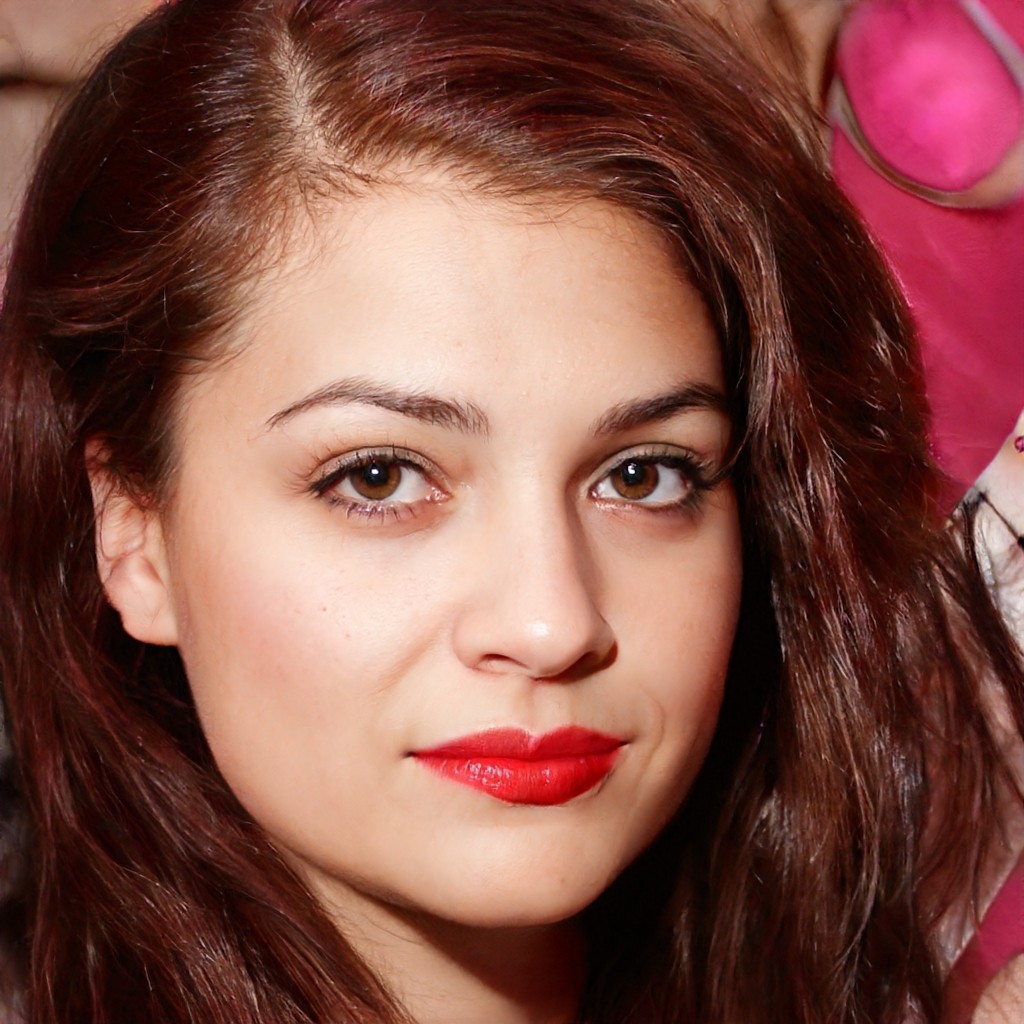
An optics enthusiast – I love bird watching as well as wildlife. Originally from South Africa, I moved to the UK at a young age. I love reviewing the latest binoculars as well as traveling. I work as a comms consultant during the day. My plan is to travel across the world so building up to that goal.

